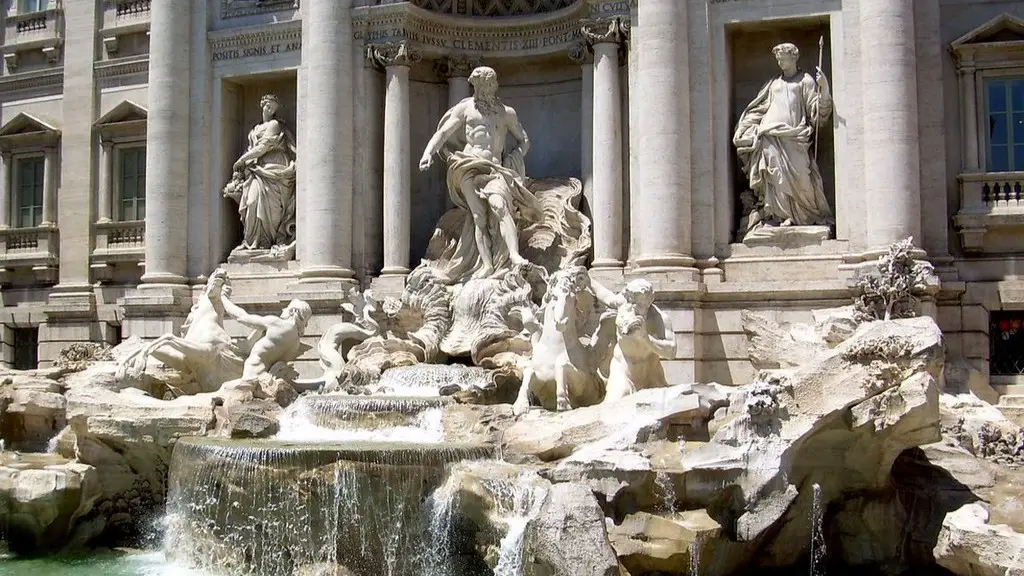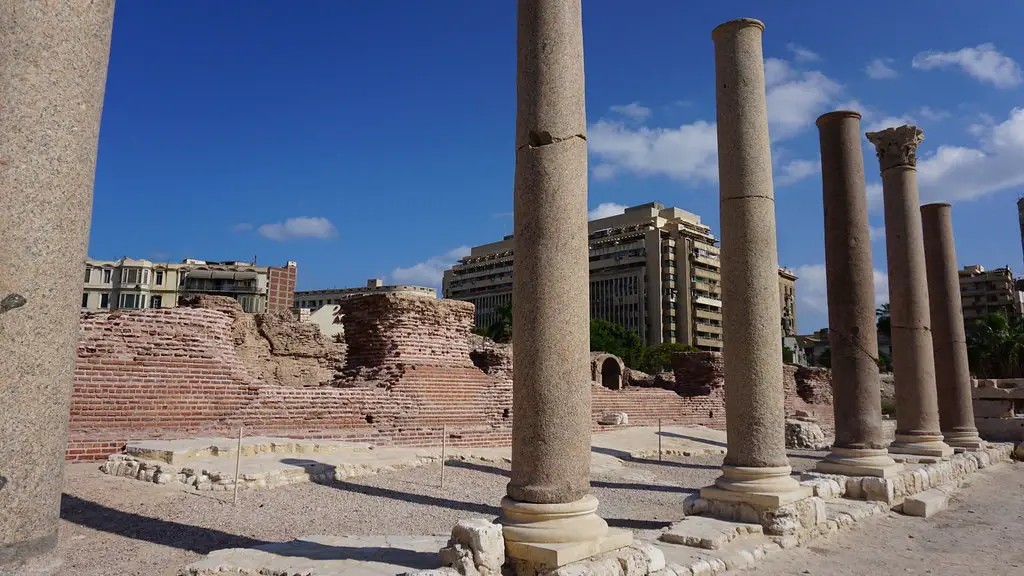Privacy in ancient Rome was sparse and its social classes were paramount in the power and success of the ideas of Rome at that time. Ancient Rome was divided into two main social classes: patricians and plebeians. Each of these social classes had a different set of laws and privileges, which meant that there were distinct differences between them.
Patricians were wealthy landowners of Rome and were part of the ruling class. Initially they were the only people allowed to hold public office, imparting a large degree of power to them. This privileged social class was considered to be above the plebeians and they had greater access to certain opportunities, rights, and privileges. Patricians were also the only ones initially allowed to be members of the Senate, a governing body tasked with making laws and political decisions.
The plebeians were the poor masses, landless citizens or simply the lower classes of Rome. These lower classes worked for wages as farmers, sailors, soldiers or servants. With time, however, the plebeian class became integrated into the Roman government and a true middle class emerged. They also began to accumulate political power and rights, although they were still viewed as inferior to the Patricians.
Both social classes had a deep impact on each other’s choices and status within Rome. Patricians, for the most part, would not marry plebeians, a decision which has been extensively framed as one of the primary contributing factors to the diverging of each class. As the rich, hereditary patricians and the increasingly independent plebeians interacted with one another, the social ladder slowly began to shift. Many plebeians who rose to power in the arena of business and politics were often seen as threats to the patrician class.
Despite the fact that patricians had more political power and were the better-off of the two social classes, even they were not immune to some of the effects of the rising plebeian class. One example of this is the eventual breakdown of the patrician’s preferred system of clientele and patronage, which saw patrons and their clients bound together in a type of bond. This system eventually dissolved and was replaced by one that was more equitable and merit-based. This shift saw the rise of plebeians in the political, social, and economic breakthroughs that occurred in Ancient Rome.
Although the two classes had their own roles in society and were expected to abide by certain rules and regulations, in many ways they were dependent on each other in order to succeed. Whilst the plebeians provided the manpower to propel Rome’s army and its economy, the patricians built the foundations for their wealth, order and control over their subjects. Ultimately it was this tension between the classes that kept Rome strong and ensured its power and success throughout its lifetime.
Evolution of Traditional Values in Ancient Rome
The traditional values that were found within the Ancient Romans were entrenched within the division of the two main social classes. There was a very clear separation of power between the different social classes and this carried through to their views on values and beliefs. Whilst the patrician class held a strong belief in Stoic philosophy, the plebeian class in comparison was more inclined to embrace more novel ideas and concepts. This was a key factor in the way that the classes evolved over times, with the patrician class holding more traditional values, whilst the plebeian class slowly moved towards a more liberal mindset. This resulted in a unique blend of two different sets of values amongst the population, which also gave rise to novel ideas, such as the concept of democracy and the idea of servitude. This was an important development in Ancient Rome as it shaped the way that the society operated and the way that laws were formed and enforced.
Women in Ancient Rome
Women in Ancient Rome were largely restricted to one of the two social classes, those of the patrician and plebeian. Within the patrician class, women were seen as the equals to their male counterparts and were allowed to share in the power and control that was held by the men. Whilst it was seen as unacceptable for a woman to be elected to any political office, they had a role in educating the younger generations, particularly in terms of religion and philosophy. On the other hand, women within the plebeian class were typically seen as lesser individuals, with far fewer rights and privileges. This lack of freedom was especially noticeable when it came to marriage, as it was not seen as acceptable for a plebeian woman to marry a patrician man. In spite of this, there were still exceptions to these certain restrictions, particularly among the wealth plebeians. These exceptions, however, were not widespread and largely ceased to exist upon the rise of the Roman Empire.
Religion in Ancient Rome
Religion in Ancient Rome was largely divided along the lines of the two main social classes. The patricians were heavily involved in the state religion, and saw their social class as connected to the gods, viewing them almost as one of their own. The plebeian class, on the other hand, took a more superstitious approach, lending itself more to the gods of the lower classes, such as Neptune and Janus. As the Roman Empire expanded, however, the traditional religion of Rome was slowly replaced by the conquering people’s beliefs. This was especially prominent in the East, where the Greek and Egyptian gods began to creep into Roman culture and where Mithraism and Christianity eventually took hold. Although traditional Roman religion was still practiced, its influence slowly waned, with more and more people seeking solace in more novel and diverse religious beliefs.
Role of Slavery in Ancient Rome
Slavery in Ancient Rome was primarily used to bolster the numbers and power of the two main social classes. Whilst the patricians typically owned slaves that they used for manual labor and domestic duties, they were far less influential than the plebeian class, who often owned large numbers of slaves and were considered to be among the most influential individuals of that era. Slavery was seen as an integral part of the society, where even the most well-off of Romans typically had several slaves in their employ. It was only through the eventual crumbling of the Roman Empire that slavery was eventually abolished, and this was predominantly done under the reign of Constantine. This however still did not mean the end of slavery, as its practice still occurred throughout the Middle Ages, but it did eventually fade away, as Rome’s own shortcomings as a society began to take prominence.
Economy and Trade in Ancient Rome
The economy of Ancient Rome was largely divided along the lines of the two main classes, the patrician and the plebeian. The patricians were largely wealthy landowners and were the primary source of trade and commerce within the society. They were the ones who typically led their own enterprises, with the plebeians serving as their labor force. Import and export trade were largely controlled by the patricians, with most of the imports coming from the Mediterranean, North Africa and Asia Minor. Although some trade did occur between the plebeians and the patricians, the vast majority of commerce was conducted between the wealthy landowners. This pattern of trade continued for several centuries until the rise of the Roman Empire, which saw a shift in power and influence, as the plebeians began to become more involved in the trading of goods.


